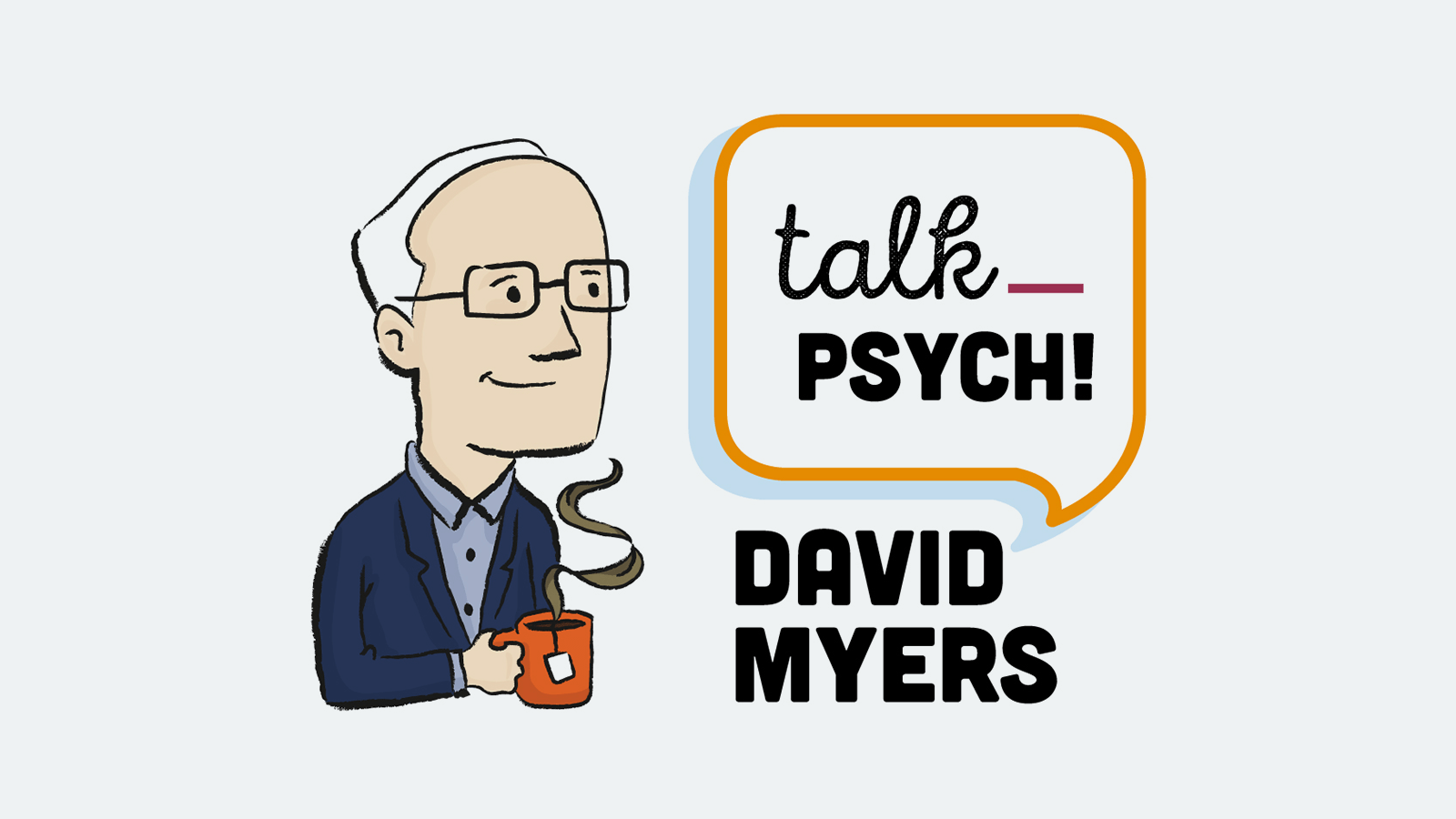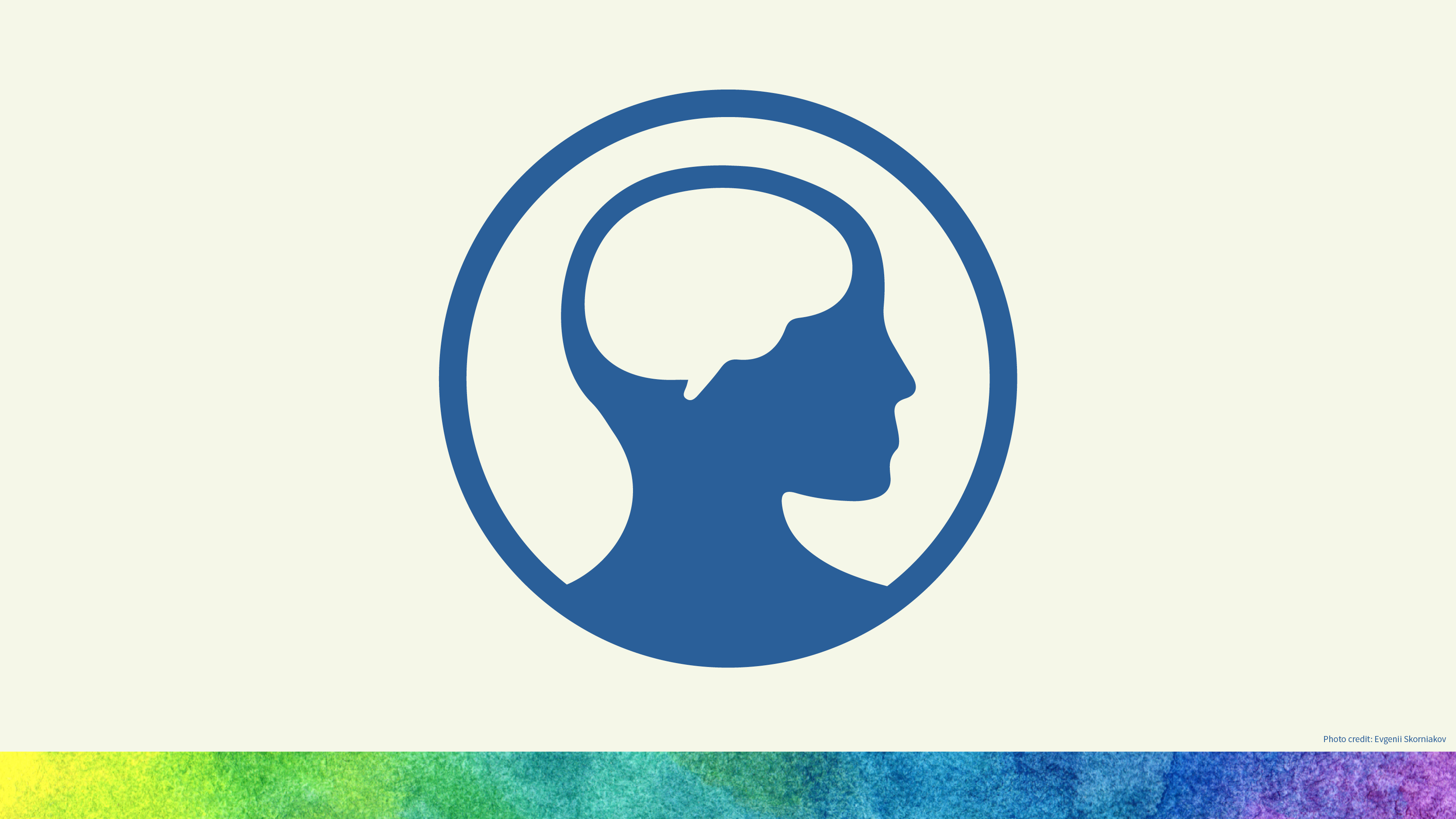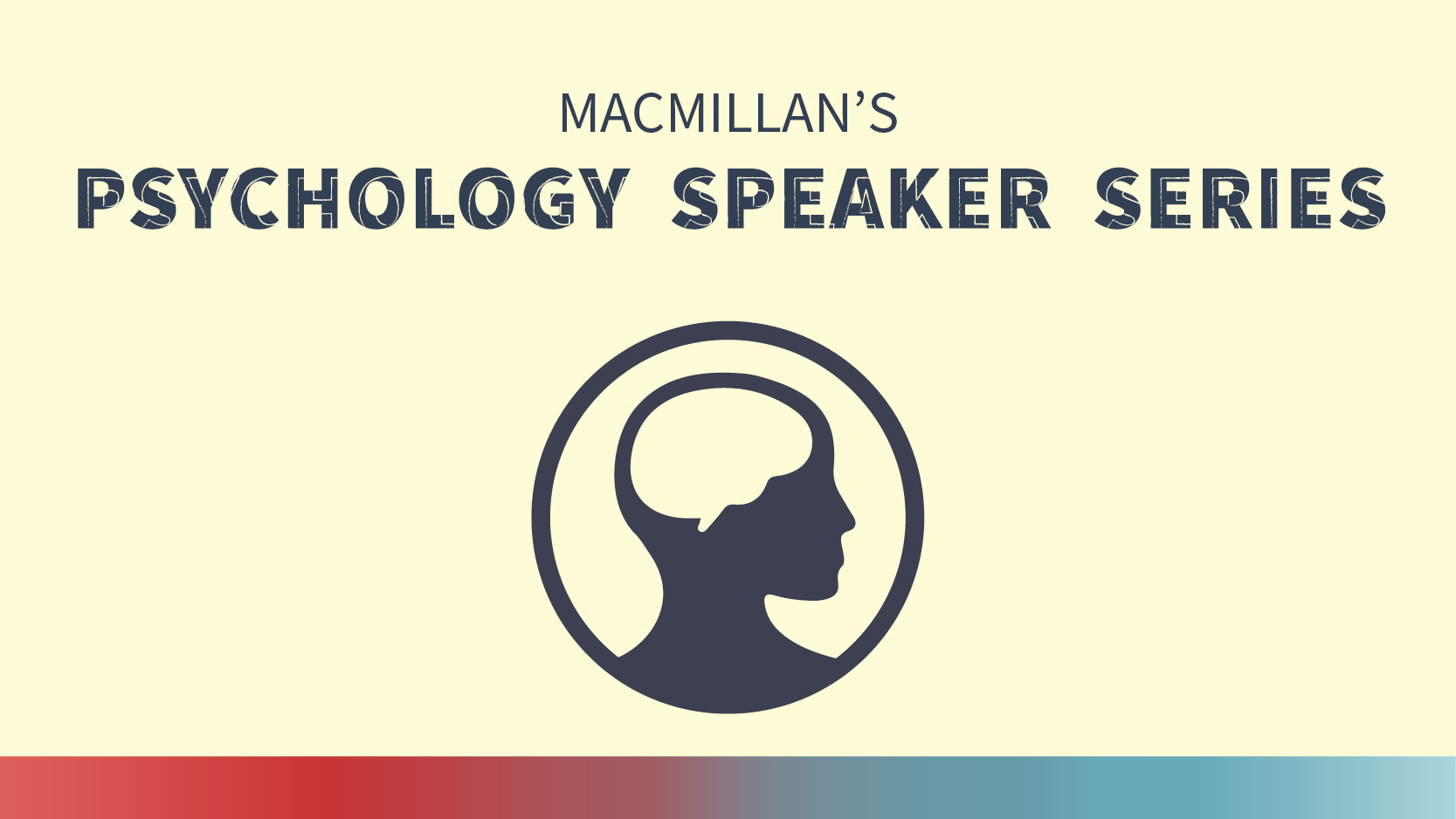-
About
Our Story
back- Our Mission
- Our Leadershio
- Accessibility
- Careers
- Diversity, Equity, Inclusion
- Learning Science
- Sustainability
Our Solutions
back
-
Community
Community
back- Newsroom
- Discussions
- Webinars on Demand
- Digital Community
- The Institute at Macmillan Learning
- English Community
- Psychology Community
- History Community
- Communication Community
- College Success Community
- Economics Community
- Institutional Solutions Community
- Nutrition Community
- Lab Solutions Community
- STEM Community
- Newsroom
- Macmillan Community
- :
- Psychology Community
- :
- Psychology Blog
- :
- Psychology Blog - Page 42
Psychology Blog - Page 42
Options
- Mark all as New
- Mark all as Read
- Float this item to the top
- Subscribe
- Bookmark
- Subscribe to RSS Feed
Psychology Blog - Page 42
Macmillan Employee
10-30-2015
08:18 AM
In addition to creepiness, our ghostly guests, or our impressions of them, have also been studied. We certainly wouldn't want them to feel left out. In order to explain those ghostly apparitions we experience, researchers have examined infrasound, electromagnetic fields, and even our brain. Once you've had your Halloween fun, check out this article to see if you're experiences might be explained by any of their findings: The Science of Paranormal Ghosts In the meantime, enjoy the weekend and tell me out your paranormal thoughts and theories.
... View more
0
0
814
Macmillan Employee
10-26-2015
12:01 AM
Creepiness. We know it when we see it. It's that dusty clown doll just sitting in the dark corner, going to the mortuary at night, the strange-looking guy that seems to be just a little too close to you. If you have to define why those things are creepy, it gets a bit tougher. Fear not, your friendly psychological researchers have asked that very question and decided to find out what makes something creepy. In 2013, Francis T. McAndrew and Sara S Koehnke of Knox College presented a poster presentation at the Society for Personality and Social Psychology annual meeting in New Orleans, entitled On the Nature of Creepiness. The survey to which 1,341 people responded (1,029 females and 312 males) took a first look at four elements of creepiness: 1) what behaviors/characteristics makes a person creepy, 2) what are creepy occupations, 3) what are creepy hobbies, and 4) the nature of creepy people. What is creepy? It seems that an ambiguous threat is the underlying factor that seems to link those things that are creepy. Things that could be associated with death or deviant sexual behavior will give people the chills. Creepy Behaviors/characteristics: Their findings suggest that men are more creepy than women. This was equally endorsed by men (95.5% vs. 4.5%) and women (95.2% vs. 4.8%). Women find a preoccupation with sex or more generally an ambiguous sexual threat as very creepy. Too much touching by others or other non-normative nonverbal behaviors that make us uncomfortable increase the creepy meter too. Creepy Occupations: The most creepy occupations are Clowns (no surprise), Taxidermists, Sex Shop Owners, and Funeral Directors. I had to wonder if psychologists would have been ranked as creepy. Unfortunately, it was not included on the list of occupations. Creepy Hobbies: Collecting stuff (dolls, insects, reptiles, etc. ) was considered creepy. A very creepy collectible was body parts (teeth, bones, or fingernails). The second most creepy hobby was voyeurism (watching, following, or taking pictures of other people). Also listed, but not a top-two finisher was a fascination with pornography or exotic sexual activity and taxidermy. The nature of creepy people: People, generally men, who do things or look like they are outside of the normal social spectrum of behavior will most likely be perceived as creepy. It isn't that we believe that the creepy person will hurt us, we just don't know/understand what they are about and that leaves us in an ambiguous place as to how to classify the potential threat of the person. Most people believe that creepy people will always be creepy, and the worst part is that if you're creepy, you probably don't know it. One thing that this study didn't address was why clowns have become creepy. That's a topic for another day, but if you are curious, read this. If you're looking for the creepiest Halloween costume, be a male who is too preoccupied with sex and death. Touch the people around you a little too much and appear disheveled and a bit unclean. If you want to add a little spit and polish to the costume, hand out business cards stating that you're a clown who collects body parts. One word of caution, this costume could stick and you won't even know. Enjoy the creepy season!
... View more
1
0
907
rosemary_mccull
Migrated Account
10-19-2015
07:52 AM
I enjoyed reading this piece out of the Harvard Business Review (just showing up also in Psychology Today), especially as it relates to trying to help students think through issues about motivation, especially with school work and job. Given how much technology and the expectation one will "respond right away" often competes with slow, deliberate and thoughtful processes, it is good to be prepared not to get pulled in. Planning, especially starting list words with a verb, can be a nice way to make goals specific and action-oriented. http://blogs.hbr.org/2014/06/how-to-spend-the-first-10-minutes-of-your-day/
... View more
1
0
1,772
rosemary_mccull
Migrated Account
10-19-2015
06:02 AM
This piece was originally published on April 17th, 2008
Throughout the world, boys and girls prefer to play with different types of toys. Boys typically like to play with cars and trucks, while girls typically choose to play with dolls. Why is this? A traditional sociological explanation is that boys and girls are socialized and encouraged to play with different types of toys by theirparents, peers, and the “society.” Growing scientific evidence suggests, however, that boys’ and girls’ toy preferences may have a biological origin.
In 2002, Gerianne M. Alexander of Texas A&M University and Melissa Hines of City University in London stunned the scientific world by showing that vervet monkeys showed the same sex-typical toy preferences as humans. In an incredibly ingenious study, published in Evolution and Human Behavior, Alexander and Hines gave two stereotypically masculine toys (a ball and a police car), two stereotypically feminine toys (a soft doll and a cooking pot), and two neutral toys (a picture book and a stuffed dog) to 44 male and 44 female vervet monkeys. They then assessed the monkeys’ preference for each toy by measuring how much time they spent with each. Their data demonstrated that male vervet monkeys showed significantly greater interest in the masculine toys, and the female vervet monkeys showed significantly greater interest in the feminine toys. The two sexes did not differ in their preference for the neutral toys.
Alexander and Hines’s article contains a wonderful picture (reproduced here in full living color, courtesy of Gerianne M. Alexander) of a female vervet monkey conducting an anogenital inspection (examining the genital area of the doll in an attempt to determine whether it is male or female), as a girl might, and a male vervet monkey pushing the police car back and forth, as a boy might. If children’s toy preferences were largely formed by gender socialization, as traditional sociologists claim, in which their parents give “gender-appropriate” toys to boys and girls, how can these male and female vervet monkeys have the same preferences as boys and girls? They were never socialized by humans, and they had never seen these toys before in their lives. Yet, not only did male and female vervet monkeys show the identical sex preference for toys, but how they played with these toys was also identical to how boys and girls might.
As stunningly ingenious and spectacular Alexander and Hines's initial study was, it stood alone in the scientific literature for a while. All new scientific discoveries must be replicated to make sure that the findings are both genuine and generalizable. Well, it took the field six years, but the original findings have now been replicated.
In a forthcoming article in Hormones and Behavior, Janice M. Hassett, Erin R. Siebert, and Kim Wallen, of Emory University, replicate the sex preferences in toys among members of another primate species (rhesus monkeys). Their study shows that, when given a choice between stereotypically male “wheeled toys” (such as a wagon, a truck, and a car) and stereotypically female “plush toys” (such as Winnie the Pooh, Raggedy Ann, and a koala bear hand puppet), male rhesus monkeys show strong and significant preference for the masculine toys. Female rhesus monkeys show preference for the feminine toys, but the difference in their preference is not statistically significant.
We do not yet know exactly why males of different primate species prefer wheeled toys and other vehicles, or why females of different primate species prefer plush toys and other dolls (except for their vague resemblance to babies, for which females are evolutionarily designed to care). However, it is becoming less and less likely that “gender socialization” is the reason why boys and girls prefer different toys, and more and more likely that there are some genetic, hormonal, and other biological reasons for the observed sex differences in toy preference.
... View more
0
0
5,156
michael_oberlin
Migrated Account
10-16-2015
09:24 AM
This piece was originally published on April 28, 2014 How well can computers interact with humans? Certainly computers play a mean game of chess, which requires strategy and logic, and “Jeopardy!,” in which they must process language to understand the clues read by Alex Trebek (and buzz in with the correct question). But in recent years, scientists have striven for an even more complex goal: programming computers to read human facial expressions. The practical applications could be profound. Computers could supplement or even replace lie detectors. They could be installed at border crossings and airport security checks. They could serve as diagnostic aids for doctors. Researchers at the University of California, San Diego, have written software that not only detected whether a person’s face revealed genuine or faked pain, but did so far more accurately than human observers. While other scientists have already refined a computer’s ability to identify nuances of smiles and grimaces, this may be the first time a computer has triumphed over humans at reading their own species. “A particular success like this has been elusive,” said Matthew A. Turk, a professor of computer science at the University of California, Santa Barbara. “It’s one of several recent examples of how the field is now producing useful technologies rather than research that only stays in the lab. We’re affecting the real world.” People generally excel at using nonverbal cues, including facial expressions, to deceive others (hence the poker face). They are good at mimicking pain, instinctively knowing how to contort their features to convey physical discomfort. And other people, studies show, typically do poorly at detecting those deceptions. In a new study, in Current Biology, by researchers at San Diego, the University of Toronto and the State University of New York at Buffalo, humans and a computer were shown videos of people in real pain or pretending. The computer differentiated suffering from faking with greater accuracy by tracking subtle muscle movement patterns in the subjects’ faces. “We have a fair amount of evidence to show that humans are paying attention to the wrong cues,” said Marian S. Bartlett, a research professor at the Institute for Neural Computation at San Diego and the lead author of the study. For the study, researchers used a standard protocol to produce pain, with individuals plunging an arm in ice water for a minute (the pain is immediate and genuine but neither harmful nor protracted). Researchers also asked the subjects to dip an arm in warm water for a moment and to fake an expression of pain. Observers watched one-minute silent videos of those faces, trying to identify who was in pain and who was pretending. Only about half the answers were correct, a rate comparable to guessing. Then researchers provided an hour of training to a new group of observers. They were shown videos, asked to guess who was really in pain, and told immediately whom they had identified correctly. Then the observers were shown more videos and again asked to judge. But the training made little difference: The rate of accuracy scarcely improved, to 55 percent. Then a computer took on the challenge. Using a program that the San Diego researchers have named CERT, for computer expression recognition toolbox, it measured the presence, absence and frequency of 20 facial muscle movements in each of the 1,800 frames of one-minute videos. The computer assessed the same 50 videos that had been shown to the original, untrained human observers. The computer learned to identify cues that were so small and swift that they eluded the human eye. Although the same muscles were often engaged by fakers and those in real pain, the computer could detect speed, smoothness and duration of the muscle contractions that pointed toward or away from deception. When the person was experiencing real pain, for instance, the length of time the mouth was open varied; when the person faked pain, the time the mouth opened was regular and consistent. Other combinations of muscle movements were the furrowing between eyebrows, the tightening of the orbital muscles around the eyes, and the deepening of the furrows on either side of the nose. The computer’s accuracy: about 85 percent. Jeffrey Cohn, a University of Pittsburgh professor of psychology who also conducts research on computers and facial expressions, said the CERT study addressed “an important problem, medically and socially,” referring to the difficulty of assessing patients who claim to be in pain. But he noted that the study’s observers were university students, not pain specialists. Dr. Bartlett said she didn’t mean to imply that doctors or nurses do not perceive pain accurately. But “we shouldn’t assume human perception is better than it is,” she said. “There are signals in nonverbal behavior that our perceptual system may not detect or we don’t attend to them.” Dr. Turk said that among the study’s limitations were that all the faces had the same frontal view and lighting. “No one is wearing sunglasses or hasn’t shaved for five days,” he said. Dr. Bartlett and Dr. Cohn are working on applying facial expression technology to health care. Dr. Bartlett is working with a San Diego hospital to refine a program that will detect pain intensity in children. “Kids don’t realize they can ask for pain medication, and the younger ones can’t communicate,” she said. A child could sit in front of a computer camera, she said, referring to a current project, and “the computer could sample the child’s facial expression and get estimates of pain. The prognosis is better for the patient if the pain is managed well and early.” Dr. Cohn noted that his colleagues have been working with the University of Pittsburgh Medical Center’s psychiatry department, focusing on severe depression. One project is for a computer to identify changing patterns in vocal sounds and facial expressionsthroughout a patient’s therapy as an objective aid to the therapist. “We have found that depression in the facial muscles serves the function of keeping others away, of signaling, ‘Leave me alone,’ ” Dr. Cohn said. The tight-lipped smiles of the severely depressed, he said, were tinged with contempt or disgust, keeping others at bay. “As they become less depressed, their faces show more sadness,” he said. Those expressions reveal that the patient is implicitly asking for solace and help, he added. That is one way the computer can signal to the therapist that the patient is getting better.
... View more
0
0
1,448
Macmillan Employee
10-05-2015
12:17 PM
If you're reading this, I'm guessing you put a lot of time, thought, and effort into the assignments you create for each of your courses. We know why we've asked our students to do the assignments, but do they? In the Chronicles of Higher Education article, The Unwritten Rules of College Success, Mary-Ann Winkelmes suggests that our students will learn more and do better if they can answer three questions about the assignments we ask our students to do. She refers this deliberate approach as academic transparency for our students. 1) What specifically is the assignment asking the student to do (TASK)? 2) Why is the assignment relevant for the student within the context of this course (PURPOSE)? 3) How will the student know they are doing well on the assignment (Criteria)? The article describes how being very deliberate about answering these three questions has helped several professors rethink and shape their courses, as well as how it has been instrumental in helping first-generation college students be more successful. As with any idea, there are two-sides to consider and the article also discusses other areas that need to be considered in a more holistic view when preparing and delivering a course. Does research have anything to say about the use of academic transparency and student learning and performance? In the Spring 2013 edition of Liberal Education, a publication of the Association of American Colleges & Universities, Mary-Ann Winkelmes reported on a large study (students N=25,000, courses N=160, institutions N=27, and countries N=7) conducted to examine the effects of promoting students' understanding of how they learn and help faculty gather and share data about student learning. In the article, Transparency in Teaching, she describes the project and shares the outcomes as they relate to class size, type of courses (STEM, Humanities, etc.), and types of students (traditional/non-traditional), as well as references for further reading and clarification. In the article, the specific elements that were found to be helpful for specific groups (class size, course, student type) is discussed, there are a few items that were found to be helpful across many of the groups. Please see the article for specific recommendations. Elements that were helpful for many groups: Discuss assignments' learning goals and design rationale before students begin each assignment. Gauge students' understanding during class via peer work on questions that require students to apply concepts you've taught. Debrief graded tests and assignments in class. Although many of us do these thing already, I found it interesting to revisit my assignments and consider if I was clear enough on describing the task, purpose, and criteria. Did I spend enough time discussing assignments in class, using formative assessment to gauge students' ability to apply concepts, and discuss graded material and how meeting criteria was demonstrated? The next time I teach, I'm going to use part of my time with students to discuss the assignments and let the students tell me if they understand what they are supposed to do, why they are doing it, and how they will know they are doing a good job, and then make more adjustments based on their feedback. I look forward to doing this. Please share your experiences with us. I'd love to hear about how it's going and what else you'd recommend.
... View more
0
0
1,180
Macmillan Employee
09-21-2015
12:09 AM
We love talking about psychology, the brain, behavior, and what it all means to us. National Public Radio (NPR) is starting a new podcast on 22 Sept called Hidden Brain. In this series, Shankar Vedantam connects science, behavior, and our own experiences. He'll be exploring topics such as switch-tracking in conversations, stereotype threat, job satisfaction (or lack thereof), research, and other conscious and unconscious factors that influence our behaviors - even when we know they do. If you'd like to know more about the podcast and here a sneak peek, click here. I'll listening. I hope you will be too. Let's talk about some of the episodes that intrigue you.
... View more
0
0
927
Macmillan Employee
09-07-2015
12:07 AM
Not really, but they can tell you something about the person who took them. Lin Qiu and colleagues wondered just what a selfie tells us about the person who took the picture. Using the Big Five Personality trait inventory and coding selfies from a social media site for various characteristics, they found out that selfies tell us a little more about the photographer than we might like. When comparing characteristics with self-reports on the personality inventory, there associations between image components and agreeableness, conscientiousness, neuroticism, and openness. The researchers were also curious to know if strangers might be able to pick out these personality traits as well. Although individuals might not be so good at determining personality traits of individual people, they seemed to be better at predicting personality traits as a group. The one trait that seemed to have some element of strong agreement in predictability was openness. So the next time you take the selfie and post it to your favorite social media site, ask yourself: "What am I telling the world about me?" Here is the link to the study: What does your selfie say about you?
... View more
3
0
994
Macmillan Employee
08-31-2015
11:30 AM
Last weekend Oliver Sacks passed away at the age of 82-years-old. Many of us are familiar with his book The Man Who Mistook His Wife for a Hat or the movie Awakenings. I suppose what he is best known for is bringing a level of compassion and understanding to human behavior through the stories of people's lives who have struggled with abnormalities of the brain. Although some criticize his less than scholarly approach to describing the lives and experiences of the men and women he met and worked with along the way, he brought a level of humanity and compassion for those who suffer with abnormalities of the brain. He opened the door for those who are not scientists, physicians, or mental health professionals to better understand human behavior and be more compassionate and respectful of those who struggle when the brain's mechanisms are disrupted and disordered. He was an explorer of brain and behavior and allowed us to join him in his journeys. Thank you Oliver, you are deeply missed. Here are links to some articles with videos. They provide a very nice introduction to Oliver Sacks, his life, and work. BBC article with video links: Click Here New York Times article with a different video link: Click Here
... View more
1
0
1,037
Macmillan Employee
08-24-2015
02:13 PM
The Glial cell is oftentimes the overlooked member of discussions about the brain. It is relegated to the pile of things that we put stuff in when we don't have enough time to talk about the brain. Although it is not best loved, it toils on to ensure our brain does what it does best - allow us to be us. So what does that gelatinous goo that is glial cells do for us? More than most would guess. Play Clean up. This is the role that glial cells are best known as. The microglia cells look around the brain for discarded bits and harmful junk. They are deeply responsible for ridding the brain of the various plaques and tangles that are implicated in various neurodegenerative disorders. If you don't love glial cells now, you might want to have a change of heart. Help the neurons get to where they need to go. As the brain develops, some of the neurons need to migrate to where they belong. Once the neuron is formed, it follows the cable-like structure of the radial glial cell that shows it where it needs to go. Once the neurons are in place, the radial glial cells transform into other types of glial cells that will be needed in the future. Some of the lucky radial glial cells transform into neurons that reside in the upper-most region of the cerebral cortex. Help get the message across. Oligodendrocytes act as a neuronal insulator which helps speed along communications and keep them from deteriorating along the way. Recent research suggests that Olie's will also break off parts of themselves at the request of neurons to help facilitate communication and the use of neurotransmitters by other nearby neurons. Keep us well-balanced in the brain. The glial cells known as astrocytes help feed and care for neurons by helping to facilitate the flow of oxygen and carbon dioxide to and from neurons. When mouse astrocytes were triggered in a way to suggest an increase in CO2 in the blood, they responded by prompting surrounding neurons to encourage an increase in breathing rate to facilitate a drop in CO2 levels. Who knew glial cells coax us to breathe? Making a bigger impact or does this sounds a little like science fiction to you? In recent research with mice, the mouse brains were injected with human glial cells. Yup, you guessed, when tested for intelligence later, the human glial mice performed better and faster than their pure mouse colleagues. What would Michael Creighton think? What the researchers found was that the human glial mice neurons had changed how frequently and forcefully their neurons were firing. The result? A "super-charged forebrain." The next time your memory is working well, you feel smart and sassy, or you are just happy to have a good brain, don't forget to thank your glial cells, along with your neurons. They make an amazing partnership that are integral to who we are. Don't forget to mention it in class. Link to the Nautilus article this blog comes from: The Neuron's Secret partner
... View more
1
0
1,043
Macmillan Employee
08-05-2015
02:04 PM
Our students ask us what kind of jobs are out there for Psychologists. The obvious answer is in mental health work, but there are other options. In a recent article in the Pacific Standard Magazine, they profiled Nneka Jones Tapia, a clinical psychologist, who is now the executive di8rector of the Chicago-area jail. She accepted the position in May 2015. Although there have been other psychologists who have worked in key positions within the corrections departments across the United States, the Pacific Standard author, Kate Wheeling, writes that she thinks it is a good trend. One of the reasons she endorses this trend is the Bureau of Justice estimates that 64 percent of jail inmates have some form of mental-health issue. Ms. Wheeling holds out hope that a psychologist can help those who are now a part of the Justice system. She writes: "Giving psychology specialists more oversight and the ability to create an environment that has the best chance of producing reformed and productive citizens may be a way to reduce the record number of incarcerated Americans, mentally ill or otherwise." What do you think about this as a line of work for psychologists? What other unconventional areas of work for psychologists are there? I look forward to hearing from you.
... View more
0
0
853
Macmillan Employee
07-29-2015
03:07 PM
As we are all aware, it's tough being an adjunct. Brianne Bolin, an adjunct, and two fellow adjuncts (one past and one current) have stepped up and are doing something to help their fellow adjunct colleagues. They've created a non-profit organization, PrecariCorps: Agents for Higher Ed. On the home page, it simply states "Seeking to provide temporary, welcome relief from the economic, emotional, and physiological stressors that all too often define the life of an adjunct educator. Brianne was inspired to create PrecariCorps as a result of the unsolicited donations she received from people who read about her experiences and struggles in an article in Elle. Brianne has a masters in English and struggles to care for herself and son on the salary she makes being an adjunct instructor at Chicago College. She struggles to make ends meet and during the summer months when she qualifies, she pays for food using food stamps ($349 per month). The PrecariCorps site was created in hopes that they could solicit donations to help fell adjuncts in various ways, from financial assistance to a place for adjuncts to share their experiences. So far, they've received 28 donations, received 10 applications for funding, and have given 2 grants. She has plans to expand the campaign and take the message to administrators and tenured colleagues. Brianne and her colleagues remind us that each of us has the power to take the first steps in making a difference in the lives of others, even when we face our own struggles. You can read about Brianne and what she is accomplishing in the March 2015 Article and the July 2015 PS article.
... View more
1
2
1,390
Macmillan Employee
07-24-2015
07:42 AM
Are you an expert in your field? Wonderful! Now be careful. In a recent study, Stav Atir and colleagues reported that self-perceived expertise can lead to people overestimating what they know and may even lead some to claim they know all about stuff that is real - bogus topics. The phenomenon studied is called overclaiming, which is a situation in which a person overclaims what they know about their own area of expertise. During the studies, people who self-identified as experts in financial concepts were asked to rate their level of knowledge about real and bogus financial topics. The "experts" claimed to have knowledge about the real and the bogus topics, even when they were warned that some of the topics listed were not real. So, if you're an expert, be careful of claiming what you know. Make sure you really do know what you're being asked about. It could be someone testing this claim. Here is a link to the abstract and a link to the popular press report regarding this study.
... View more
0
0
748
Macmillan Employee
07-16-2015
02:24 PM
When we think of psychotherapy, we think Freud. Pavi Sandhu of Scientific American reminds us that Josef Breuer (1842-1925) was there at the beginning and introduced Freud to Anna O. When Breuer worked with a patient, he spent time examining all aspects of a person's life, to include personality and emotional expression. Freud preferred to the now famous psychodynamic approach. Although Breuer and Freud were initial close professional and personal friends, their differences in how to work with patients eventually drove a deep wedge between them. If you're curious to know more about Breuer and his influence on the talking cure, take a look at the article. In the mean time, why don't you sit down and tell me what's on your mind today.
... View more
2
0
1,123
Macmillan Employee
07-01-2015
12:05 AM
There are so many great teaching conferences and it can be difficult to pick. In July, I'll be joining OLC conference for Blended Learning in Denver, 7-8 July. In addition, I will be attending the Conference on Teaching Large Classes in Virginia, 23 July. We always need great ideas for student engagement for large glass sizes, so I'm looking forward to the sessions. I'll let you know how the conferences go, sessions I attend, thoughts about the sessions, and my general impressions about the conference. Let me know if you'd like some twitter comments from the conference. If you're there, I'd love to say hi and chat.
... View more
0
0
957
Topics
-
Abnormal Psychology
16 -
Achievement
3 -
Affiliation
2 -
Behavior Genetics
2 -
Cognition
33 -
Consciousness
32 -
Current Events
26 -
Development Psychology
18 -
Developmental Psychology
30 -
Drugs
5 -
Emotion
55 -
Evolution
3 -
Evolutionary Psychology
4 -
Gender
17 -
Gender and Sexuality
7 -
Genetics
10 -
History and System of Psychology
6 -
History and Systems of Psychology
5 -
Industrial and Organizational Psychology
47 -
Intelligence
6 -
Learning
63 -
Memory
37 -
Motivation
13 -
Motivation: Hunger
2 -
Nature-Nurture
5 -
Neuroscience
45 -
Personality
29 -
Psychological Disorders and Their Treatment
21 -
Research Methods and Statistics
98 -
Sensation and Perception
43 -
Social Psychology
121 -
Stress and Health
51 -
Teaching and Learning Best Practices
54 -
Thinking and Language
18 -
Virtual Learning
25
- « Previous
- Next »
Popular Posts













